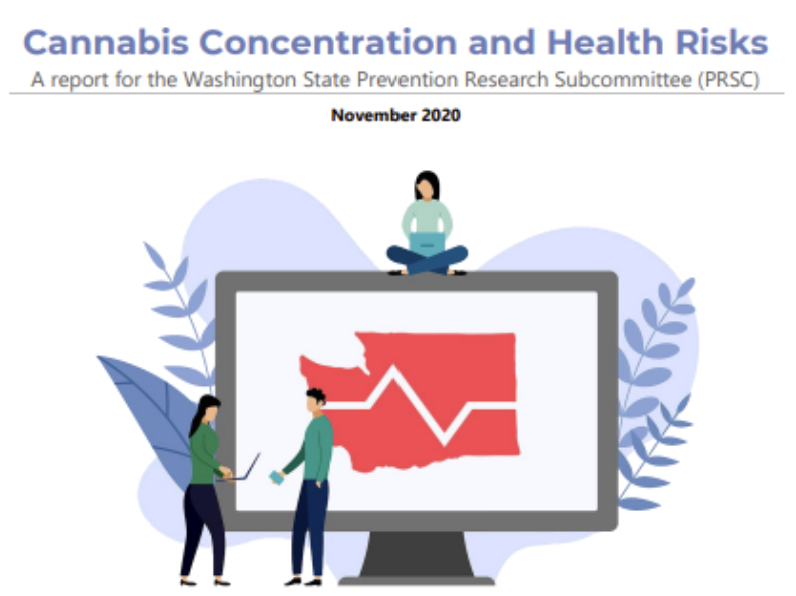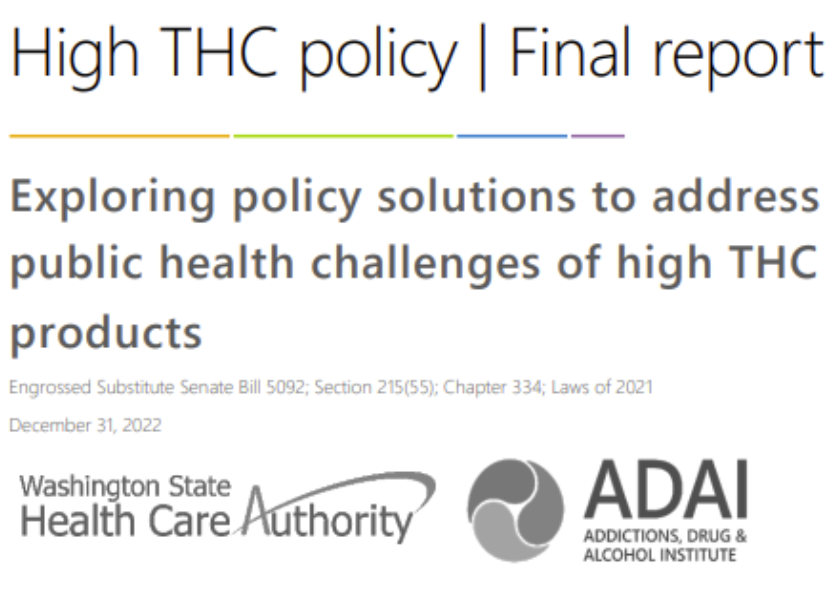Ask an Expert: What are “High THC” Cannabis Products and What Policies Could Help Limit Harm from Their Use?
04/19/2023
Meet our expert
Beatriz Carlini, PhD, MPH
Director, ADAI Cannabis Education and Research Program
What are high-THC concentration cannabis products? How much THC is considered “high-THC”?
Tetrahydrocannabinol (THC) is the best-known psychoactive ingredient in the cannabis plant–the ingredient that causes people to feel “high.”
High-THC cannabis concentrates include things like shatter, wax, butters and oils used for dabbing and to produce vaping cartridges and infused joints. They’re also the main mind-altering ingredient for edibles.
Concentrates contain THC levels varying from 60-90%. These levels are a 6-to-9-fold increase over what was considered “highly potent” cannabis back when the main method of use was smoking the cannabis plant.
These products can have varying percentages of THC concentration, however most policymakers looking at ways to reduce harms from these products focus on those that contain 35% THC or more.
What are the concerns with high-THC cannabis products?
Science has shown us that the higher the “dose” (amount) of THC someone uses, the more likely they are to experience negative health effects in response.
In 2020, experts from the University of Washington and Washington State University published a report, “Cannabis Concentration and Health Risks: A Report for the Washington State Prevention Research Subcommittee (PRSC),” that identified three primary areas of concern related to these negative health effects:
- Young people are more vulnerable to high-THC products, especially when it comes to developing “cannabis use disorder” (cannabis addiction).
- Young adults, people with lower incomes, racial and ethnic minorities, and those reporting poor mental health are more likely to “dab,” the riskiest method of using high-THC concentrates, leading to disproportionate rates of harm among more vulnerable groups.
- High THC products can have lifelong mental health consequences. Daily cannabis use, especially of high-THC products, increases the risk of developing a psychotic disorder (like schizophrenia) and can worsen symptoms in people with an existing psychotic disorder.
What policies do scientists recommend as a way to reduce harms from high-THC products?
To address this emerging public safety challenge of increasingly available high-THC products (e.g. dabs, wax, concentrates), the WA State Health Care Authority was directed by ESSB 5092 (2021) to contract with the University of Washington’s Addictions, Drug & Alcohol Institute (ADAI) to identify areas of common ground and consensus and develop recommendations for state policies related to cannabis concentration and mitigating detrimental health impacts.
The recommendations, published in this 2022 report to the legislature, include the following:
- Decrease access to high-THC cannabis products (products with greater than 35% THC) by making taxes on products proportional to total THC concentration. In other words: make higher-THC products cost more to purchase.
Research has found that increasing taxes on alcohol and tobacco products has been effective in reducing purchase and use of those products, so it follows a similar approach to cannabis could help reduce use and associated harm.
- Reduce the number of people using high THC products using two approaches:
- Prohibit marketing and advertising of high THC products (research has taught us that youth in particular can be very susceptible to marketing and ads)
- Raise the legal age from 21 to 25 for purchasing products with more than 35% THC concentration
- Educate the public about the risks from using high-THC products by:
- Adding THC-specific mandatory health warning labels to make sure people using these products understand the risks
- Adding a standard THC serving unit and total servings on product labels to make it easier for people to control their own dosing,
- Requiring education about risks and dosing whenever someone purchases a high-THC product in a store,
- Funding social media campaigns and public service announcements targeting people at elevated risk for experiencing high THC products’ negative effects
Where can I learn more about this?
Interested in digging deeper into this topic? Here are a few resources to check out:
- LearnAboutCannabisWA.org: ADAI’s website providing science-based information for the public about cannabis.
- Cannabis Concentration and Health Risks: A Report for the Washington State Prevention Research Subcommittee: Report by the PRSC Cannabis Concentration Workgroup (UW and WSU experts), 2020.
- Research Brief: Cannabis Concentration and Health Risks: Is High Potency Associated with Adverse Health Effects?: Two-page easy-to-read brief based on the PRSC Cannabis Concentration Workgroup report above, 2020.
- High THC Policy | Final Report: Exploring Policy Solutions to Address Public Health Challenges of High THC Products: Report to the legislature by WA State HCA & UW ADAI. December 2022.
- Report Addresses Mental Health Risks of High-THC Cannabis: UW Medicine piece about the High THC Policy | Final Report and ADAI Cannabis Education & Research Program (CERP) Director Beatriz Carlini, PhD, MPH
- 2022 ADAI research Symposium on High-THC Cannabis in Legal Regulated Markets: This day-long event was held on September 16, 2022, and featured a range of experts speaking about the short- and long-term risks of high-THC products, including conversations about policy-focused solutions and ways to increase awareness through education campaigns. Slides and video recordings available.
- 2024 ADAI research Symposium on Cannabis, Schizophrenia, and Other Psychotic Disorders: This day-long event was held in September 2024 and brought together the most qualified scientists in the world to share the latest research on the link between frequent use of cannabis, especially products with high THC concentration, and the development of acute episodes of cannabis-induced psychosis, as well as the increase risk individuals who experience that psychosis have of developing lifelong psychotic disorders later in life.
- More information and resources from the ADAI Cannabis Education & Research Program (CERP)







